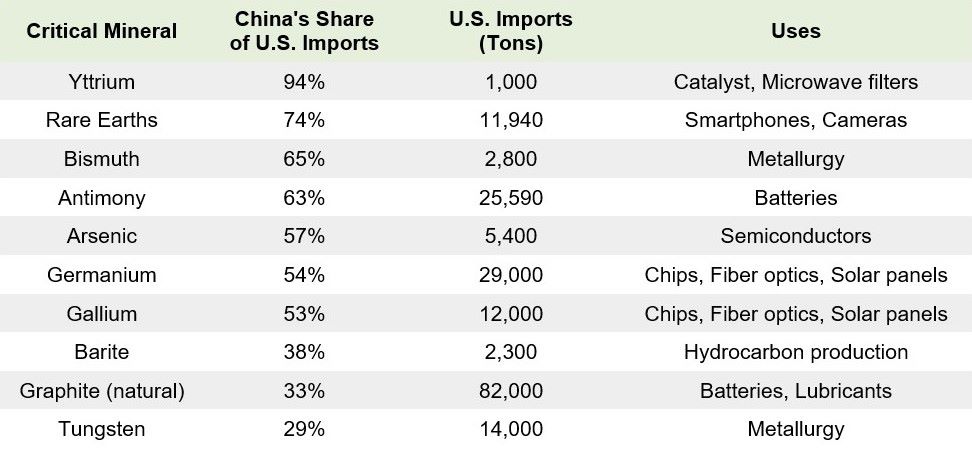China still dominates supply of critical minerals to U.S.
If China decides to stop the export of minerals to the United States that are deemed “critical” for U.S. economy, America would be in trouble. Particularly its defense system.
Defined in the 2020 Energy Act as “non-fuel mineral or material essential to the economic or national security whose supply chains are vulnerable to disruption,” the U.S. has been regularly updating the list of such minerals since the first world war. They include tin, nickel, platinum, nitrates and potash among others.
More to read:
China reports discovery of rare ore deposits
In the case of 50 entries on that list China is the leading producer of 30 minerals. The U.S. Geological Survey (USGS) estimates that China’s share of U.S. imports for 10 critical minerals poses risks to U.S. national security.
According to the USGS annual report for 2023, in the case of yttrium China is responsible for 94% of U.S.
imports from 2018 to 2021. A rare soft silvery metal, yttrium is used, for example, as an additive for alloys in microwave filters for radars and as a catalyst in ethylene polymerization - a key process in making certain kinds of plastic.
Here’s a list of critical minerals from China upon which America relies on, based on statistical data between 2018 and 2021 (latest available):

The report also identifies 15 rare earth elements on the periodic table, known as the lanthanide series, which are important in the U.S. import structure. They are used in smartphones, cameras, hard disks, and LEDs, as well as in the clean energy and defense industries.
The USGS estimates that China could potentially disrupt the global rare earth oxide supply by cutting off 40–50% production, impacting suppliers of advanced components used in U.S. defense systems.
Should Donald Trump return to the White House, he will almost certainly start a new trade war with China, threatening thus both the economy and the security of his own country.
More to read:
In 2075, China and India will be the world’s largest economies
The world’s largest producers of rare earths are China (44 million tons), Vietnam (22 million tons), Brazil (21 million tons), Russia (12 million tons), and India (6.9 million tons). Other notable reserves of these elements are in Australia (4.1 m), the U.S. and Greenland (1.5 m each), Tanzania and Canada (less than 1 m).
The global supply of rare earths is estimated at more than 115.8 million tons.
***
NewsCafe is an independent outlet that cares about big issues. Our sources of income amount to ads and donations from readers. You can support us via PayPal: office[at]rudeana.com or paypal.me/newscafeeu. We promise to reward this gesture with more captivating and important topics.







